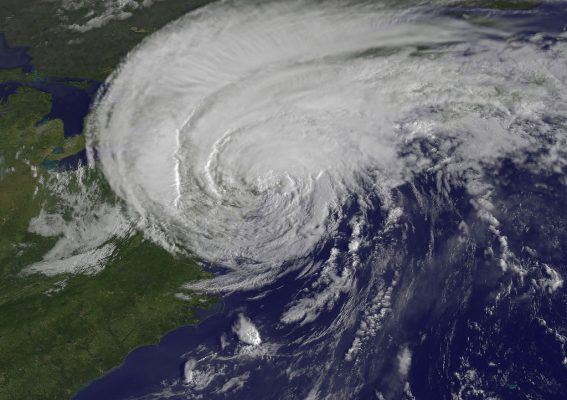Is Fordham Ready for a Natural Disaster?
Hurricane Irene approaching New York in 2011. What if it happened again? (NASA/NOAA GOES PROJECT VIA FLICKR)
November 19, 2017
Following the disastrous effects of Hurricane Sandy throughout the New York City metropolitan area back in 2012—and in the wake of such recent, heartfelt tragedies as Hurricane Harvey and Hurricane Irma—the future of natural disaster preparedness at Fordham is deeply concerning for many.
At Fordham, where about 58 percent of students live on campus, both parents and students alike have the right to be concerned over the safety of the residents. Included among these safety concerns is the possibility of a natural disaster. According to the Fordham University Libraries, “After Hurricane Sandy, the university lost communication via telephone and internet, but the university’s Facebook page and Twitter feed were active and kept updated. These became the only source of communication notifying staff and students of closings, class cancellations and campus updates until power was restored.”
So how prepared is Fordham for a natural disaster in the future, such as another hurricane like Sandy? Fordham, unfortunately, does not possess a fallout shelter at either campus, which would be essential in the case of a nuclear threat to the United States, severe weather or a natural disaster. Since Fordham does not possess a shelter of any sort, this would therefore lead to students gathering in overcrowded shelters that are close to campus, the closest one being Martin Luther King, Jr., High School. This is completely insufficient, as the school officials would end up losing contact and accountability for the students, which could be disastrous. Fortunately, however, Public Safety on campus provides an online guide to all Fordham students and faculty to learn how to react to occurrences of severe weather and earthquakes, both on and off campus. More importantly, Fordham University Library’s “LibGuides” provide an online guide to all students and members of faculty in the scenario of a natural disaster or an emergency.
Within the Emergency & Natural Disaster LibGuide, an emergency preparation checklist is made clear to the visitor of the website. This checklist places chief importance on faculty and staff members, as all department heads are to act as first-responders in the case of an emergency or natural disaster and possess a first-aid kit and emergency supplies. It also ensures that all library staff are made aware of the locations of fire alarms, extinguishers and emergency exits throughout their respective Fordham campuses. A list of emergency supplies is also made available on the website. This appears to be efficient until one recognizes that there are very few department heads at Fordham in proportion to the amount of students at the university. This may create issues during emergency situations, as the sparsity of department heads may lead to delays in assistance during such situations.
With all these tools, guides and procedures in place to keep students and faculty on campus safe, the main problem left is communication, which stood evident during the devastating events of Hurricane Sandy. As the university lost the ability to communicate and officially notify its students and faculty on the matters present before them, Fordham was down to using its “last resort” mode of communication: social media. This does not have to be a drawback, however, as our society tends to rely more on social media for our news coverage and communication with others in general. Simply put, it seems as though it is the most convenient and up-to-date way of relaying information, with feedback and a system of communication being implemented to answer any student or faculty member’s individual questions.
Fordham’s disaster preparedness in general is adequate for a university of its size. However, this does not mean that the administration’s job is over. There are improvements that could be made in regard to the amount of people who are able to assist in emergency situations, and there should be facilities set up that protect students in case of an emergency situation that is inescapable. Therefore, the university should take the most efficient and organized measures possible to guard the safety of us—the students of Fordham—even in the most dire of consequences. Even so, we should continue to put trust in the administration and staff of Fordham, whose goal, in the end, is to keep all of us safe during whatever matter that may arise.









